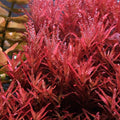Aquarium Dos and Don'ts: Tips for a Thriving Underwater World
Aquascaping is a rewarding hobby, and not everyone knows how to do it. This kind of hobby needs patience, time, knowledge, budget, and attention to detail. If your passion is aquascaping, then this blog post is right for you. Listed below are the essential dos and don'ts that we have learned over the years here at Aquafy. Whether you are a newbie or an experienced one, these tips below will help you achieve a healthy and happy aquarium world.
Aquarium DO's:
Water Testing: Start with a solid foundation by having your tap water tested for pH, alkalinity, nitrate, and phosphate. Ensure it meets the required standards for your aquarium's inhabitants.
Go Big: Invest in the largest aquarium your budget and available space allow. Larger tanks offer greater stability and are easier to maintain.
Patience is key. Allow your newly set-up aquarium to run for 2 to 3 days before introducing your first fish. This gives time for the water parameters to stabilize.
Regular Water Testing: Test the aquarium water for pH, ammonia, and nitrite levels before adding new fish. Maintaining ideal water conditions is crucial for your fish's well-being.
Acclimate New Fish: Always acclimate new fish purchases to your aquarium's water conditions to minimize stress.
Research Animals: Thoroughly research all potential aquarium inhabitants to ensure you can provide the proper food, environment, and care they need.
Equipment Research: Similarly, research all equipment before purchasing to ensure it's compatible with your setup and the needs of your aquatic pets.
Water Changes: Change 10% of your aquarium water every week or 25% every two weeks. Use replacement water at the same temperature as the aquarium water.
Use Water Conditioner: Treat tap water with a water conditioner to neutralize chlorine and ammonia before adding it to the aquarium.
Filter Maintenance: Change filter cartridges at least once a month, checking them weekly and rinsing as needed.
Fish Health Checks: Regularly inspect your fish for signs of illness, ideally during feeding times.
Varied Diet: Feed your fish a variety of flake, pellet, and frozen foods to ensure they receive proper nutrition.
Schooling Fish: Purchase schooling fish like tetras, barbs, rasboras, and danios in groups of six or more to support their social needs.
Aquarium Don'ts:
Avoid Drastic Cleaning: Never completely tear down your aquarium for cleaning, as it disrupts the biological balance.
Limit Water Changes: Avoid water changes of more than 25%, as larger changes can stress your fish and disrupt the tank's balance.
Moderate Lighting: Do not leave the aquarium light on 24/7, as this can stress your fish and promote excessive algae growth.
Location Matters: Keep the aquarium away from direct sunlight or drafty locations to maintain stable water conditions.
Impulsive Fish Purchases: Don't buy fish on the same day you set up the aquarium. Let it run for a few days before adding your first fish.
Responsible Fish Selection: Avoid purchasing fish on impulse. Ensure they won't outgrow your tank, are compatible with existing inhabitants, and that you possess the necessary knowledge, equipment, and food.
Prevent Store Water: Never allow store water to enter your aquarium when adding new fish.
Gradual Introductions: Don't add too many fish at once, especially in smaller or newly established aquariums.
Mindful Stocking: Avoid overstocking your aquarium, as crowded conditions can lead to aggression and water quality issues.
Sensible Feeding: Don't overfeed your fish; offer only what they can consume in under 2 minutes to prevent water pollution and fish stress.
Quality Equipment: Don't base equipment purchases solely on price; ensure they meet your specific needs and are of good quality.
Avoid Contamination: Never use buckets, scrub pads, or equipment that has been exposed to soap or other chemicals in your aquarium.
















